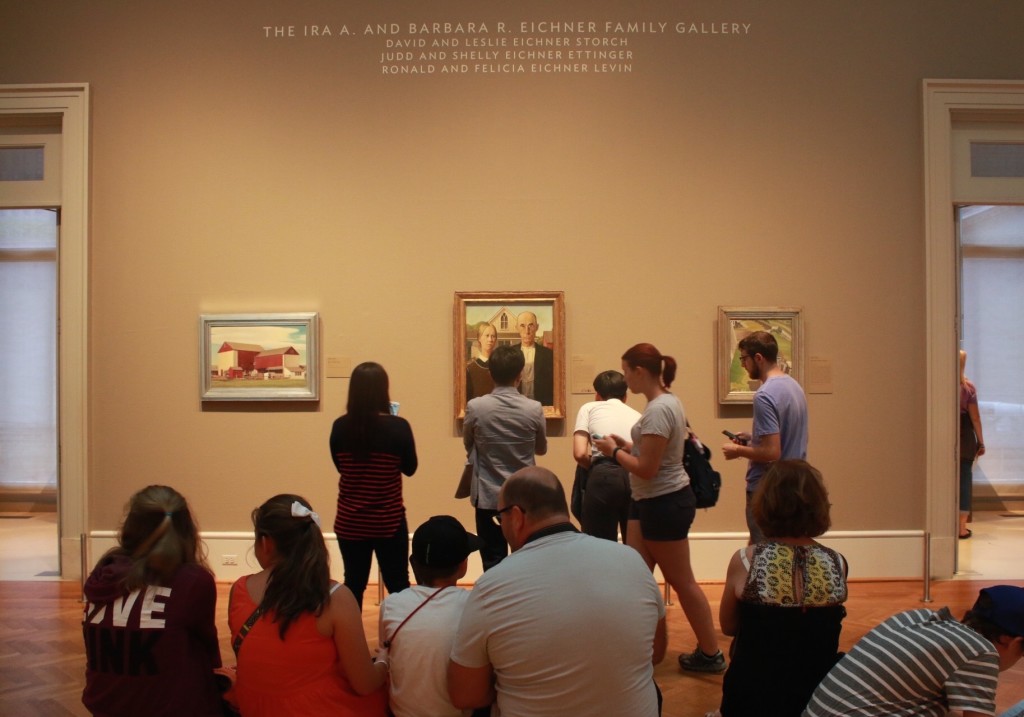
Recently, Artnet posted an article “10 Tips for Newly Minted Tech Millionaire Art Collectors” for overnight tech millionaires that are looking to park their money in art collections. Some of the tips Artnet provides apply to a collector at any level but I thought I could build a better “10 tips” list for us ordinary folks who didn’t get a chance to invest early in unicorns.
Let me preface the list with this: I have been a collector for most of my life, 7 years in art collecting specifically in which I’ve spent tens of thousands of dollars to fuel the addiction. As you could tell from the blog, my collection is largely based on street art, containing some familiar names like Craola (@craola), David Choe (@davidchoe), Faile (@faileart), Kaws (@kaws) and Shepard Fairey (@obeygiant).
Without further ado, here are my 10 tips for new non-millionaire art collectors.
1. Don’t treat your collection as an investment portfolio.
The thing that makes art collecting so sexy is the money, and it’s quickly becoming a popular asset class among the mega-rich. An index of fine art sales from 2013 showed a 10% average annual return on art funds since 1985. On a micro-level, if you visit art communities like Expressobeans, it’s not uncommon to find prints that sell for 2-3x retail only a few hours after release. With returns like that, who wouldn’t want to collect art?
The truth is, these data are completely skewed. Statistically speaking, you are more likely to lose money on your art investment than to see any gains from it. I’ve bought a lot of art, both prints and originals, that instantly lost money as soon as I walked out of the gallery with it. You, as a private collector, simply cannot command the same price as a gallery or an artist could, and they are the experts at maximizing their profits (Of course, exceptions like Eli Broad exist, who is opening The Broad Museum, which will basically be a rotating display of his billion dollar collection that will only grow in value with each showing). A Stanford study from 2013 found that art as an asset class “would not substantially improve the risk/return profile of a portfolio diversified among traditional asset classes, such as stocks and bonds.” With that said, read on to find tip #2 and more.
2. Buy what YOU like.
Don’t get bought into the hype. Don’t buy into an artist simply because you think you can make money by flipping the piece three months from now when he has a retrospective at that small Texas museum that no one’s heard of. Do buy into a piece of artwork or an artist because the subject matter resonates or you are enthralled by the history of the artist’s career. Art should be a visceral experience.
Here’s a good rule of thumb: If the artwork lost all its value tomorrow, would you still hang it on your wall and show it off to your friends? If yes, then you should buy it. If not, then save that money for something else that you will love. There are so many talented artists out there that you’re bound to find something that you will love, whatever your budget might be.
3. Join an online art community.
The best decision I ever made as a collector was to join forums like Kidrobot forum and the Definitive Obey Giant Site, also known as thegiant.org. There is a wealth of knowledge in these kind of communities to learn about any artist, upcoming art shows, and current trends and moods for collectors. Most forums also allow buying, selling, and trading of works so it’s a valuable resource to growing your personal collection.
4. Go visit museums and attend gallery shows.
Joining an online forum is easy and bantering about who’s the best street artist over the Internet could be fun. But nothing beats seeing the artworks in person, the way that the artist had intended.
It’s a little bit counter-intuitive, but art collecting is a very social hobby. Collectors inherently collect to share their collection and passion with others, and gallery shows are perfect way to connect with artists, gallerists, and fellow collectors. Try to organize a Happy Hour meet-up in a local bar before a show opening. Since you guys already share a common interest in the genre or artist, you’re bound to like each other. Collectors love talking about their collections like it’s their baby.
5. Become a loyal patron of your favorite gallery.
You know how they say “it’s not what you know, it’s who you know”? Well, this applies to art collecting too. Most galleries do not always have sold-out shows from all-star artists. That happens maybe once or twice a year for even the most popular galleries. Then what about all the other shows throughout the year? That’s where you come in, the loyal patron. Buy a few pieces from these smaller shows, enough for the gallery owners to get to know you as a collector, and start a conversation with them to express your interests in certain artists or motif. By the time a blockbuster show comes around, the gallery will know you and, as a token of appreciation for riding through the year with them, you will be placed on the preview list well ahead of the other collectors that came to the gallery for only the all-star artist.
I’m not saying to buy pieces that you don’t like. You should always be discerning in what you put in your collection, but this will challenge you to appreciate art that may not be in your comfort zone, while at the same time building a powerful collection that you can post on Instagram and get 100 Likes in 1 minute.
6. Collect books.
Art books are an inexpensive way of collecting art. Art books contain hundreds of images from specific artists, so you don’t even have to decide which image is your favorite like you have to when buying an artwork. Artists like Shepard Fairey and Faile publish high quality book that you can enjoy as if it’s a piece of art in itself. For example, the recent book release by Faile featured unique silk-screened covers with pages and pages of beautiful artwork found on different paper stocks and crazy inks. If you leave them out on a coffee table in your home, they’re great conversation starters with guests.
7. Find a reputable framer that you trust.
Now you’re beginning to amass your dream collection with the stars and rising-stars of the art world. These are your babies, and you can’t trust chain-store framers like Michael’s or Aaron Brothers to take the same amount of care into handling your babies, can you? I’ve heard too many horror stories of these chain framers using irreversible adhesives to place a print onto a mat or, worst of all, cutting the artwork so that it fits into their ready-made frames. Not only is the piece of art worthless after that treatment, but they won’t be pleasing to look at when it’s hanging on your wall.
Research your local framers. Yelp is a great resource. Go talk to them and try to gauge their skills. Ask them about what material they use for valuable artworks. If they ever mention “dry-mounting” during this conversation, say “thank you” and walk out the door.
A good framer can actually enhance your viewing experience. If you’re in the Los Angeles area, I would highly recommend these guys: @framingdevil and @shermangallery. A lot of local galleries and collectors frequent these guys, and I can personally vouch for the quality of Framing Devil’s work.
8. Join Instagram.
Instagram is the artist’s social media. I haven’t met a single artist yet that I couldn’t find on Instagram. Being a visual-heavy media platform, it is in perfect harmony with artists’, galleries’, and collectors’ needs. It’s so simple to use and easily accessible that even the most social media-averse people find that they can actually tolerate Instagram. There’s no better app out there for keeping up with new shows, work-in-progress, art news, etc.
I mean, I’m sure you guys already know how I feel about Instagram given how much I utilize it on this blog.
The next two tips come straight from the Artnet article, but let me give it my own spin.
9. Look for art in unexpected places.
You can find art almost anywhere. Of course, galleries and eBay sell art, and you can even directly contact artists through their website to commission paintings. But what if I told you I bought a Shepard Fairey print from 1993 through Flickr for 50% of the going-rate at the time ? What if I told you I bought an original Saber canvas piece from an old-school collector I found through Craigslist? What if I told you I bought a hand-finished print that had sold out years ago simply because I thought to contact him via Instagram? I even searched on Japanese auction sites to score some rare Obey prints from the late 1990’s. These are all true stories! The depth of your collection is only limited by your own creativity and resourcefulness.
10. Don’t be a flipper.
Nobody likes a flipper. First, let me define “flipper”. A flipper is a person that buys a piece of artwork with the sole intention of turning it around to sell at a huge markup to collectors that missed out on the original release. They are the pariah of the art world. As much as we hate them, flippers will exist as long as there’s money to be made.
This was a really fun and personal post for me to write because art collecting is truly a passion. That’s also why this blog exists. If you ever have any questions about art collecting, feel free to reach out to me through email. BDAB at bestdamnartblog.com.
